|
Project Type: Residential Retrofit System Type: Ground-Source Heat Pump Contractor: New Era Plumbing and Heating Local Missoula residents, Tim Skufca and Marta Meengs, recently began the process of switching out their gas furnace for a ground-source heat pump. Their goal is to eventually become completely independent from natural gas! From navigating funding sources to dealing with mouse-poop ductwork, Tim and Marta decided to take on a system retrofit that would benefit them, future residents, and the environment in the long-run. Read through the Q&A to learn more about their ongoing project, experience, and advice for Missoulians looking to make the switch. 1). What initially prompted you to make the switch to an electric system?
Both the need to replace the outdated furnace AND the desire to completely disconnect from natural gas. 2). What resources helped you along the way? A plumber friend and a ground-source guru (Marc Hauger, New Era Plumbing and Heating) explained the system to us, he designed it and built it. 3). What were some of the barriers you ran into? The cost is certainly an issue, but with a great government loan program (low rate) and a 30% tax rebate (in 2021) it made it a little bit easier, especially factoring in the cost of a new furnace that we needed to do anyway. 4). What sort of funding resources did you take advantage of? There was a federal loan program* that offered a maximum of $40,000 at a <4% interest rate. We borrowed the entire $40,000 (which helped renovate our kitchen, and installed in-floor hydronic heat, drilled a well, and reconfigured the entire mechanical system of the house). *Note: We believe that this is actually a loan program through DEQ, not a federal loan program. 5). Did you consider the payback period of your system (long-term vs. short-term costs)? The R.O.I. (return on investment) only makes sense on a long-term basis. When we installed the ground-source system we didn't expect an energy cost savings. Our electric bill increased, but the gas side of the NorthWestern bill was gone! It took a month for NW Energy to come out to our house and lock the gas line, otherwise we still were charged certain gas fees. HOWEVER, since installing the 25 solar panels (2 years ago), we have not paid NorthWestern ANYTHING!! But, again, even considering zero energy payments, Marta and I will probably be dead before those savings equal the cost of getting this house to net-zero. This is key: one does not strive for net-zero for energy-cost savings. The cost does not pencil out. The REAL reason is to do it for the house. We recently moved out of that house and are renting it. Those renters pay nothing for their power, as will all generations to come. 6). Did you apply for any rebates or financial incentives through your utility? We just learned that there is a ground-source incentive via NorthWestern Energy, and we are certainly going to tap into this for our current project. 7). Did you see any change reflected on your utility bill? Not much change until we installed solar panels two years ago. Since then there have been negligible payments to NorthWestern Energy. 8). To what extent are you tying your system to on-site solar? Our ultimate goal is to be off-grid. We are waiting until the battery technology gets a bit better. 9). Did you pair your electric system with “smart” controls (ie. programmable thermostat)? We have a "Nest" thermostat, which can do WAY MORE than we will ever tap into. 10). Has your ground source heat pump affected your household’s thermal comfort? The comfort comes from converting from gas forced-air furnace to in-floor heat. Having the floor warm allows the thermostat to be much lower in the winter. With a furnace, the temperature fluctuates from too warm to too cold all day long. Hydronic heat levels this out. PLUS!, in the summer we chill the floor by circulating the well water temperature through the floors, thus extracting heat from the rooms. 11). What is the make/model of the system you chose? Why did you choose this ground source heat pump over others? The system was designed and installed by New Era Plumbing, we had no input on the design. 12). Was the existing ductwork/HVAC infrastructure compatible with your heat pump? We tore out all the old, mouse-turd infected ducts. THEY WERE GROSS! 13). How well does your system perform in the winter? Superbly. 14). What kind of permit was required? Did you find the permitting process slow or hard to navigate? We had to get a permit to drill the well, which was relatively easy. I think the Health Department enjoys something odd to consider, and therefore were quite helpful. 15). What advice would you give to Missoula residents looking to install a similar system? Consider the house more than the pocket book when deciding to remove the gas line. Gas furnaces keep being the go-to heat system because gas is so cheap. Until this changes it is hard to justify converting when you just are thinking about dollars. The environment trumps the dollar in our minds. 16). Is there anything else you'd like to add? I just wanted to add a few points. One, even after we placed the solar panels, we still pay service fees to Northwestern Energy (about 4 dollars/month but will probably get increased in the future). Another point is that we are tied to the grid and there is still a net metering program in place. If Northwestern Energy eliminates the net metering credit (something they have tried to do every year), then we would not receive the credit obtained in the sunnier months to help us pay for the winter, less sunnier months. Keeping net metering credit is essential for solar panel cost pay back. One more point is that switching to radiant floor heat surprised me in that it kept the house so much more comfortable, even keeping the thermostat at 66 degrees in the winter, not drafty like forced air heat. Just my two cents worth!
0 Comments
Project Type: Low-Income Multifamily Residential, New Construction System Type: High-Efficiency, R-410A Split System Heat Pump Cooling Capacity: 18,000 to 57,600 BTU/h Heating Capacity: 18,000 to 59,000 BTU/h SEER Rating: Up to 14 SEER HSP Rating: Up to 9.0 HSP Project Concept, Scope, and Funding The Missoula Housing Authority (MHA) built the Cornerstone Apartments in 2020, an urban infill project with 12 one-bedroom homes for very-low-income people (<30% AMI) with priority given to frequent users of the City’s emergency response systems. From the beginning, the project team intended to include all electric systems. Due to budget limitations, MHA was initially forced to remove high-efficiency air-source heat pumps from the schematic design and replace them with less-efficient electric resistance heaters, which are cheaper to install, but more expensive and energy-intensive to operate over the long-term. The desire to figure out an affordable, efficient way to move forward with all-electric systems sparked Cornerstone to become a "test project" for Climate Smart Missoula's new Footprint Fund Carbon Offset program, allowing an outside entity, in this case Clearwater Credit Union, to earn carbon offsets by providing extra funding to support the inclusion of high-efficiency heat pumps in the project. Clearwater funded half of the cost of the heat pumps as part of their effort to offset almost two years of their emissions, at a price of ~$25/ton. The lower energy and operation and maintenance costs will save MHA ~$107,000 over the lifetime of the system! More about this offset program and how it worked are detailed HERE. The Case for High-performing Heat Pumps MMW Architects, the architectural firm that designed the Cornerstone Apartments, used Sefaira and the DOE Energy Plus2 engine, cross referenced with their internal database, regional averages, and the US Energy Information Administration’s CBECS database (Commercial Building Energy Consumption Survey), to estimate the energy use of the baseline system (electric resistance heat) and the more efficient system (air-source heat pumps). This model estimated the annual energy savings of 63,021 kWh/year over a 20-year lifetime, giving a total electricity savings of 1,260,420 kWh/lifetime (1,260 MWh/lifetime). MMW also estimated the additional cost of the heat pumps to be $44,000. The Bottom Line
In the end, each apartment was built with a high-efficiency split-system heat pump that will reduce greenhouse gas emissions by nearly 900 tons over the systems lifetime. The estimated $10,000 in annual energy savings will offset the operational costs for the apartment complex for MHA. |
Electrify Missoula is a collaboration between Missoula County, Climate Smart Missoula and the City of Missoula.
This website is intended for informational purposes only. Be sure to consult a professional before making your plan for electrification.
This website is created and updated by Climate Smart Missoula.
Learn more about all of our local climate efforts at
missoulaclimate.org
Learn more about all of our local climate efforts at
missoulaclimate.org
Proudly powered by Weebly

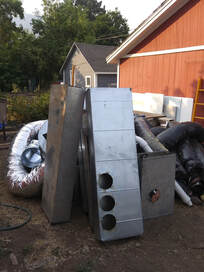
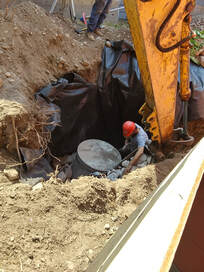
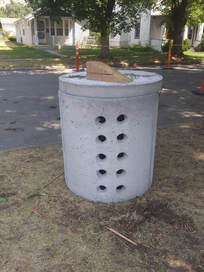
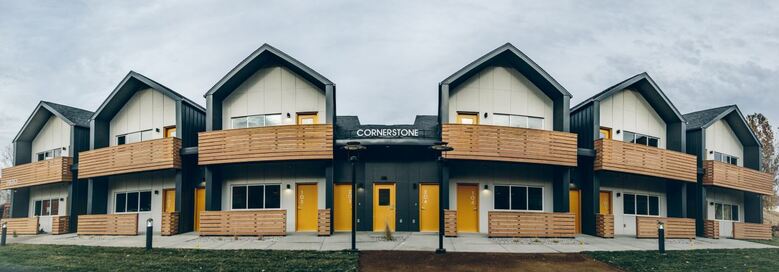
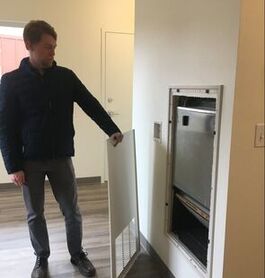
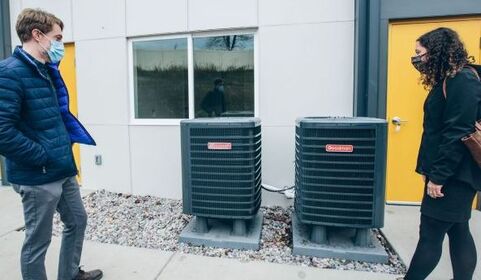
 RSS Feed
RSS Feed


